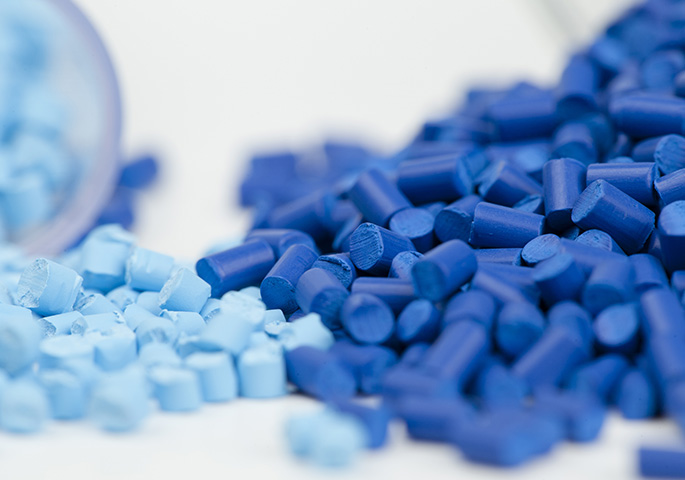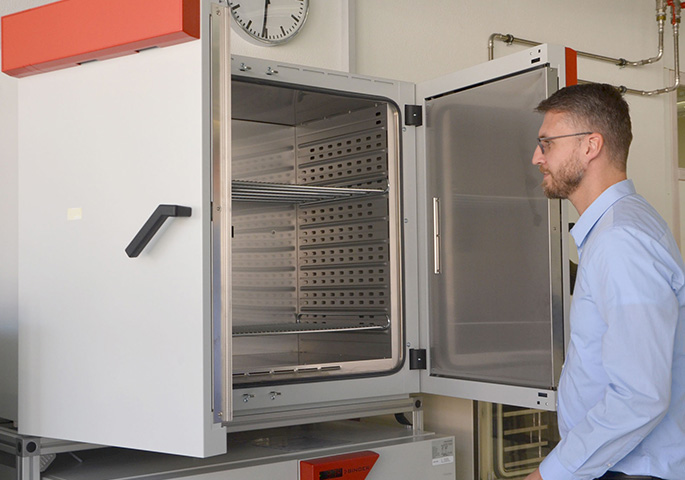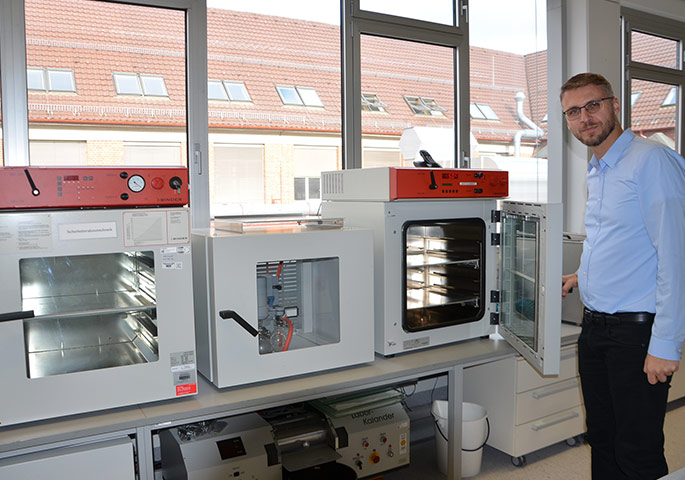Case Study Aesculap AG
Remit:
- Short, precise drying procedures
- Vacuum pump provided
- Drying procedures at temperatures that are not too high
- Reliable conditions during drying procedures
BINDER solutions:
- Temperature range: ambient temperature of +15°C to 200°C
- APT.line™ preheating chamber technology
- Controller with time-segment and real-time programming
- 2 aluminum expansion racks
- Inert gas connection
- Shatterproof, spring-mounted safety glass panel
- Class 2 independent adjustable temperature safety device (DIN 12880) with visual alarm
- Computer interface: RS 422
- 2 relay outputs, 24 V DC (max. 0.4 A)

In the research and development laboratory operated by Tuttlingen-based Aesculap, a subsidiary of B. Braun Melsungen AG, everything is run with military precision. Clad in white coats, the assistants in the LAB – as it is known – sit poised over test tubes and petri dishes as they carefully work on the company’s latest development projects. In a secured room next door, three Caiman employees are simulating an operating theater scenario.
The work they are doing involves a bipolar vessel sealing instrument designed for open and laparoscopic surgery. Turn your attention to any given employee in the Aesculap LAB and you’ll see a BINDER chamber not far away, just waiting to be filled. Bernd Blender is one of those employees. He opens a BINDER VD 115 vacuum drying chamber that the LAB continually uses for sample drying procedures and material preconditioning. “We use BINDER equipment to test the
quality of raw granulates that we incorporate into applications such as implants,” he explains. Blender, who acts as head of testing in the LAB, sets the chamber to 45°C. After 48 hours, he will then remove the samples and perform analyses that will allow him to conclude whether the material conforms to Aesculap’s stringent quality standards – and whether it is therefore suitable for use. The company requires it to pass the tests with flying colors before it will consider incorporating it into any of its new medical technology products. It is proud to create products that are made in Germany – or made in Tuttlingen, to be exact. Not far away from where Blender is working are two BINDER drying and heating chambers (FP 400 and ED 400), which perform drying procedures and sample reconditioning for analyses or subsequent steps involved in processing. They are also responsible for polymerizing glue systems – or in layman’s terms, testing how glue hardens. As well as this, the LAB experts perform immersion tests in buffer solutions, testing
aspects such as the swelling properties of structures and materials and the decomposition behavior of absorbable materials. These are products that gradually break down in the body and reduce the impact that foreign objects have on it.
The process involves heating substances such as raw granulates to 37°C in buffer solutions and testing them to see how changeable they have become. In other words, it simulates the conditions inside the human body to see whether the materials in question are suitable for practical applications. Blender will carefully observe what happens to the materials over time, whether that means ten weeks or two to three years, to ensure that everything conforms to the high quality standards that both BINDER and Aesculap are known for.


Advantages of vacuum drying chambers from the VD series:
- Fast, gentle drying
- Direct heat transfer through large thermal conducting plates
- Safe work thanks to proven safety concept
- Coordinated complete modular system with vacuum pump and module